Quick info
- One of the longest and most impressive lines in the island
- Steep and technical climbing through the center of the Paredon wall on Puig Major
- Long mildly technical scrambling descent or rappel
- Fully bolted, but may need additional protection
- 7 pitches / 280 meters
- 6a / 5c / 5c / 5c / 6a+ / 4 / 6a
General
The Paredon wall impressively rises up for 300 almost completely vertical meters and forms the southeastern face of Puig Major. This wall, its neighbor the Agulla de Frare and the Puig des Vinyes form a real alpine setting that feels very remote from the hustle and bustle of the beach resorts. El Paredons huge triangle shape hosts several trad, mixed and even fully bolted lines. The summit itself is an auxiliary peak of Puig Major called Pla de Figa (1256 meters above sea level) that is connected to the main peak by a ridge and col.
The route named La Comon is one of the fully bolted and harder options to tackle this crown jewel of multi pitch climbing on Mallorca.
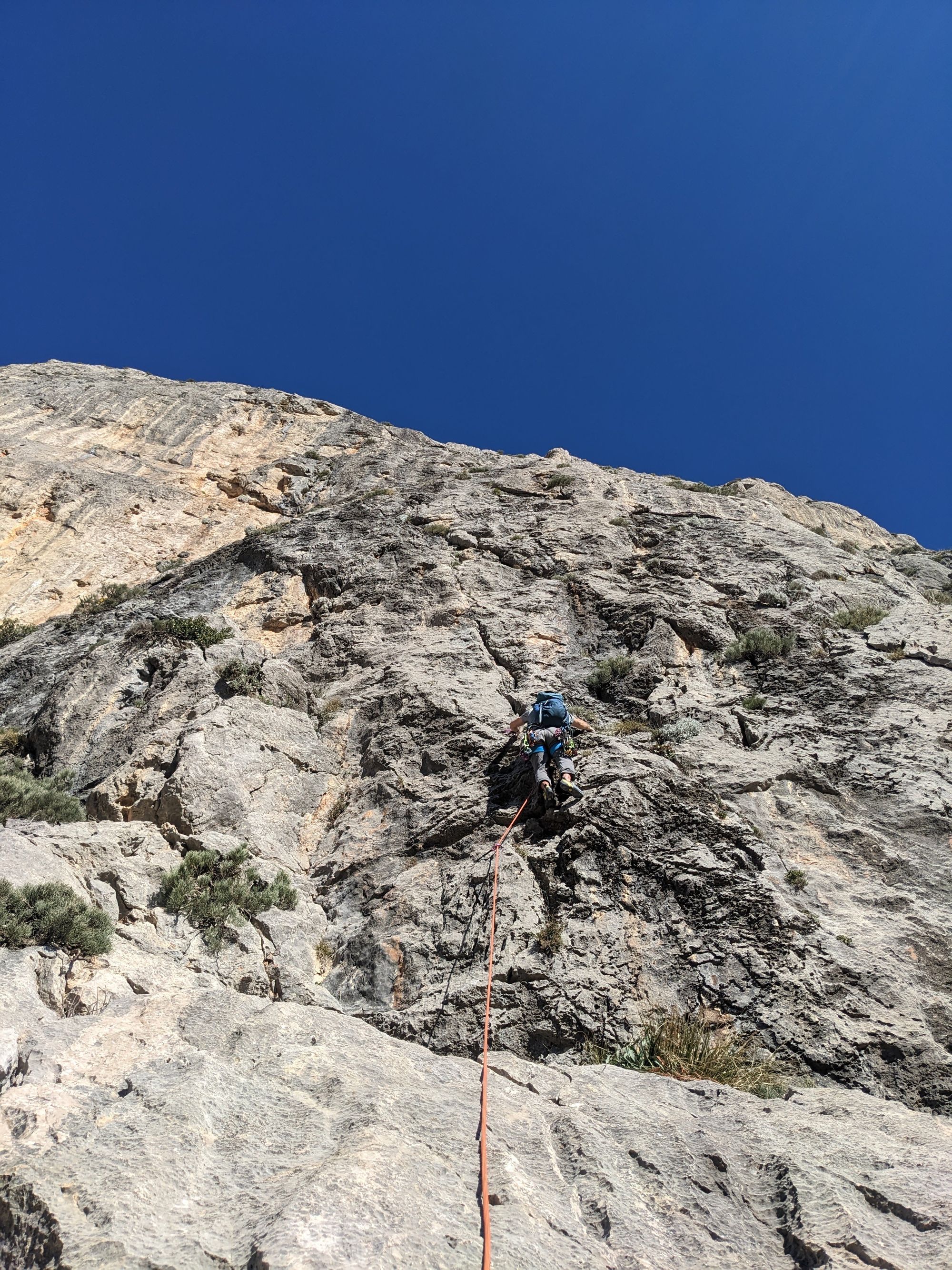
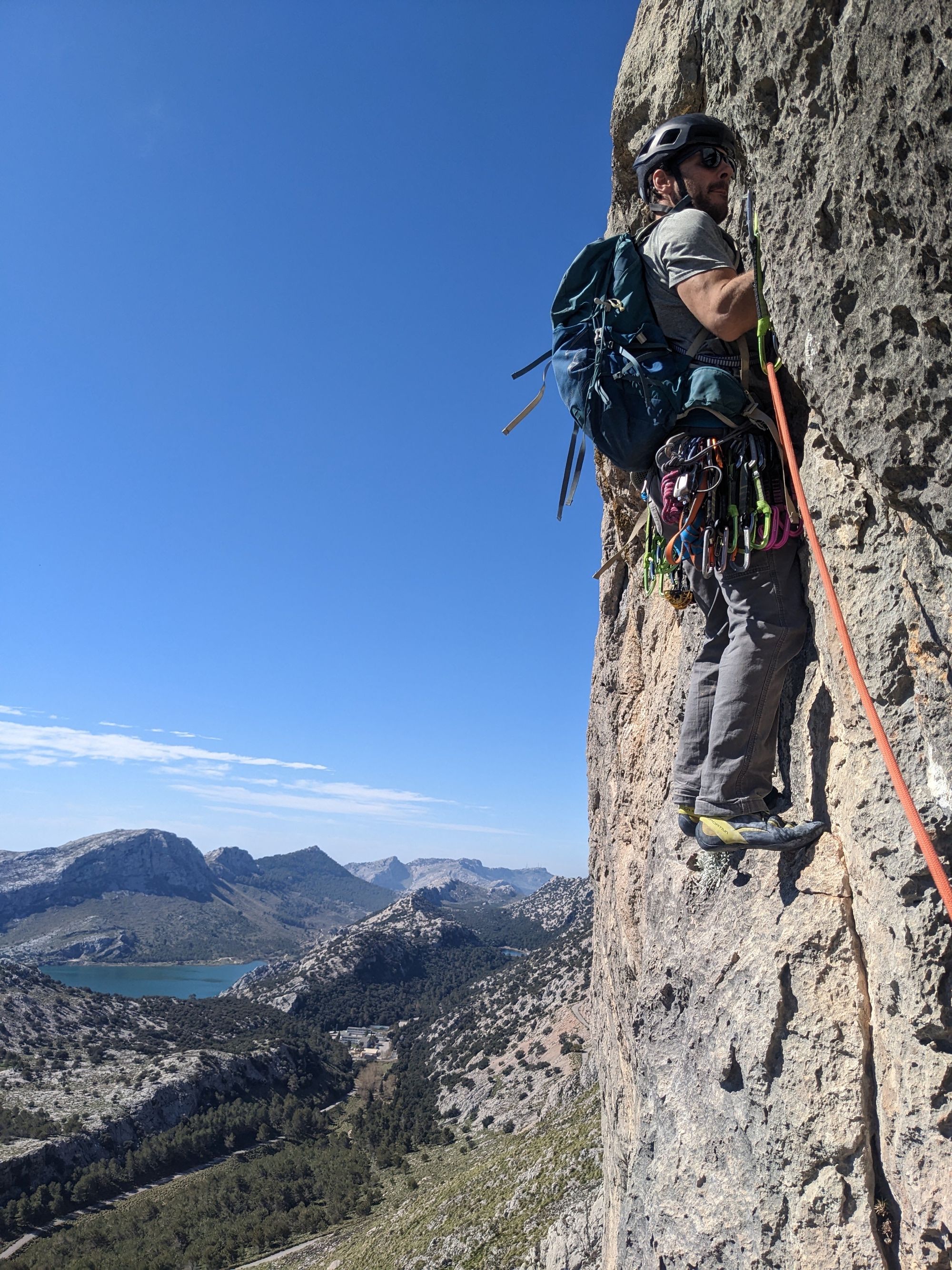
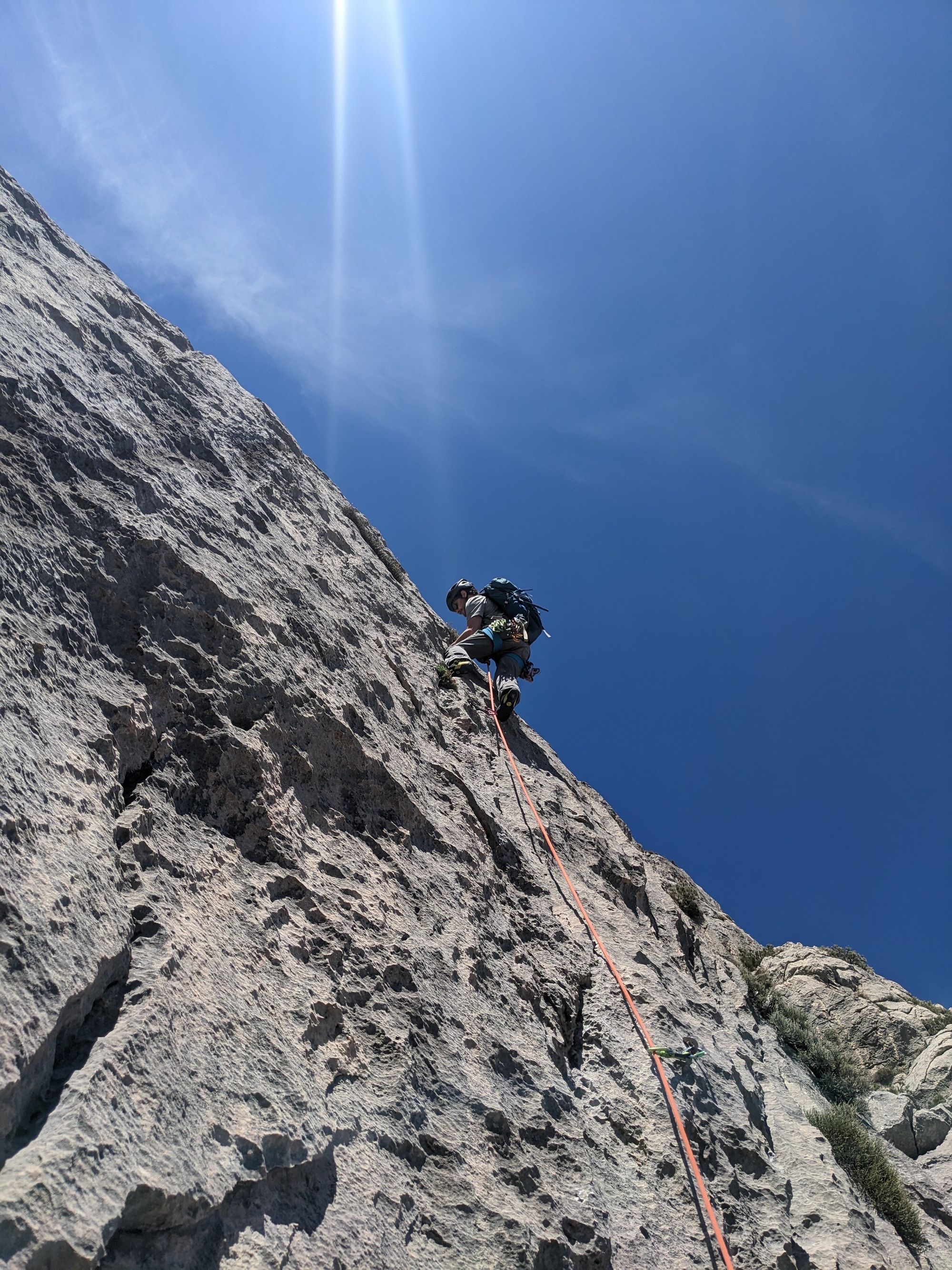
Logistics
Same as for Agulla de Frare which is right next to the Paredon wall.
Approach and descent

For the approach follow the description in the chapter on Agulla de Frare until the first small iron ladder over the fence. Make your way pathless to the clearly visible base of the climb right of the large yellow part of the wall. About 2.2 kilometers and 200 meters of elevation.
To descent you can either rappel off the route and retrace your steps or scramble down.
Scramble descend alternative 1

For the down scramble first make your way up onto the summit and continue straight down to a grassy col. From here turn right and move over down via scree and vegetation towards the rock needle visible next to another col.
Left of the needle a small break in the rock leads to a steep drop with a tree a few meters down. Down climb to the tree to find some fixed gear. Rappel of this gear for five meters to reach the steep canal right behind the Agulla de Frare.
Continue down the canal and pass the Agulla de Frare on the left hand side. After almost passing the rock spire you will find the set of fixed ropes leading all the way down to the valley floor. You can use these ropes to rappel some of the steeper bits as well.
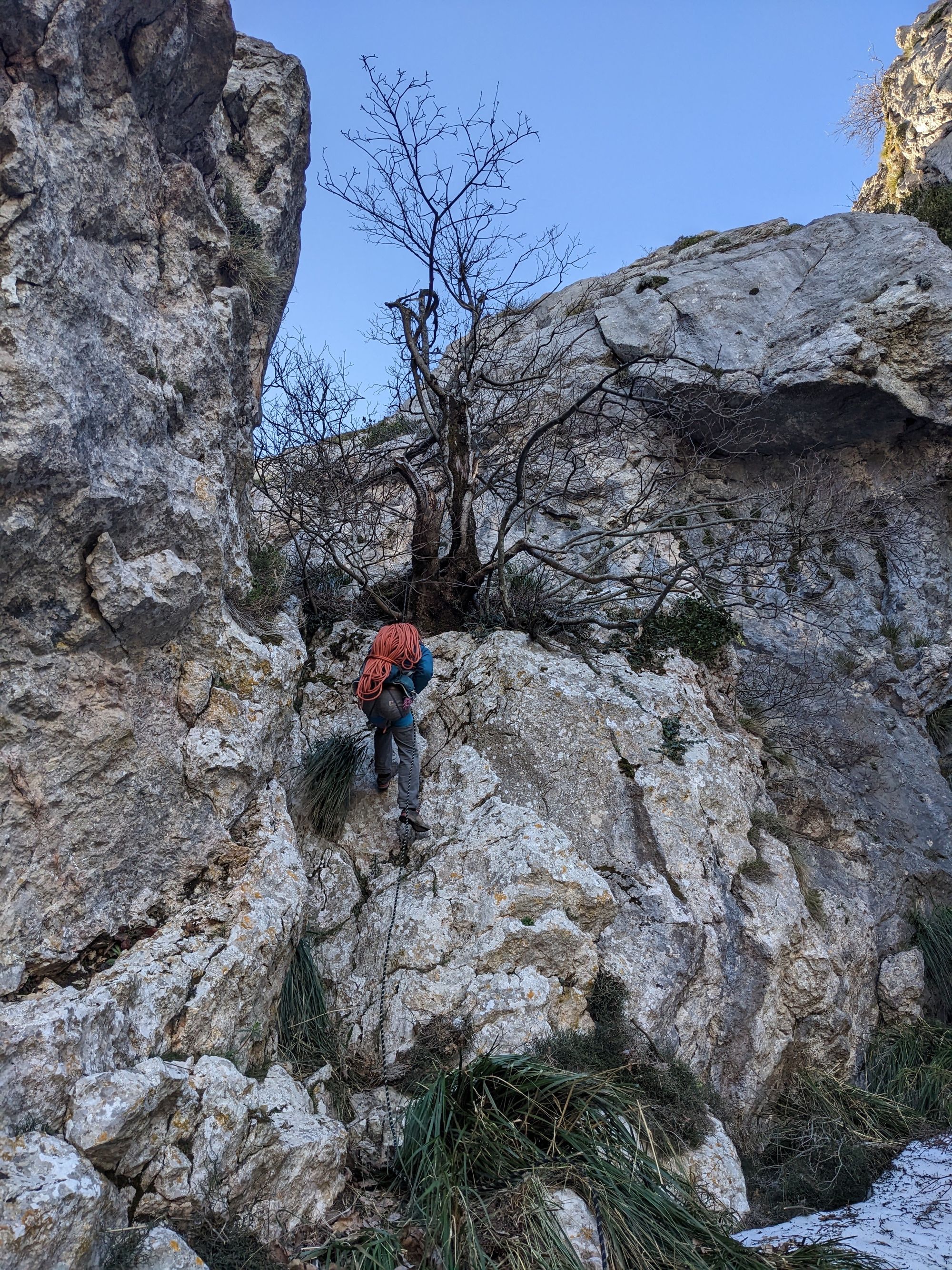
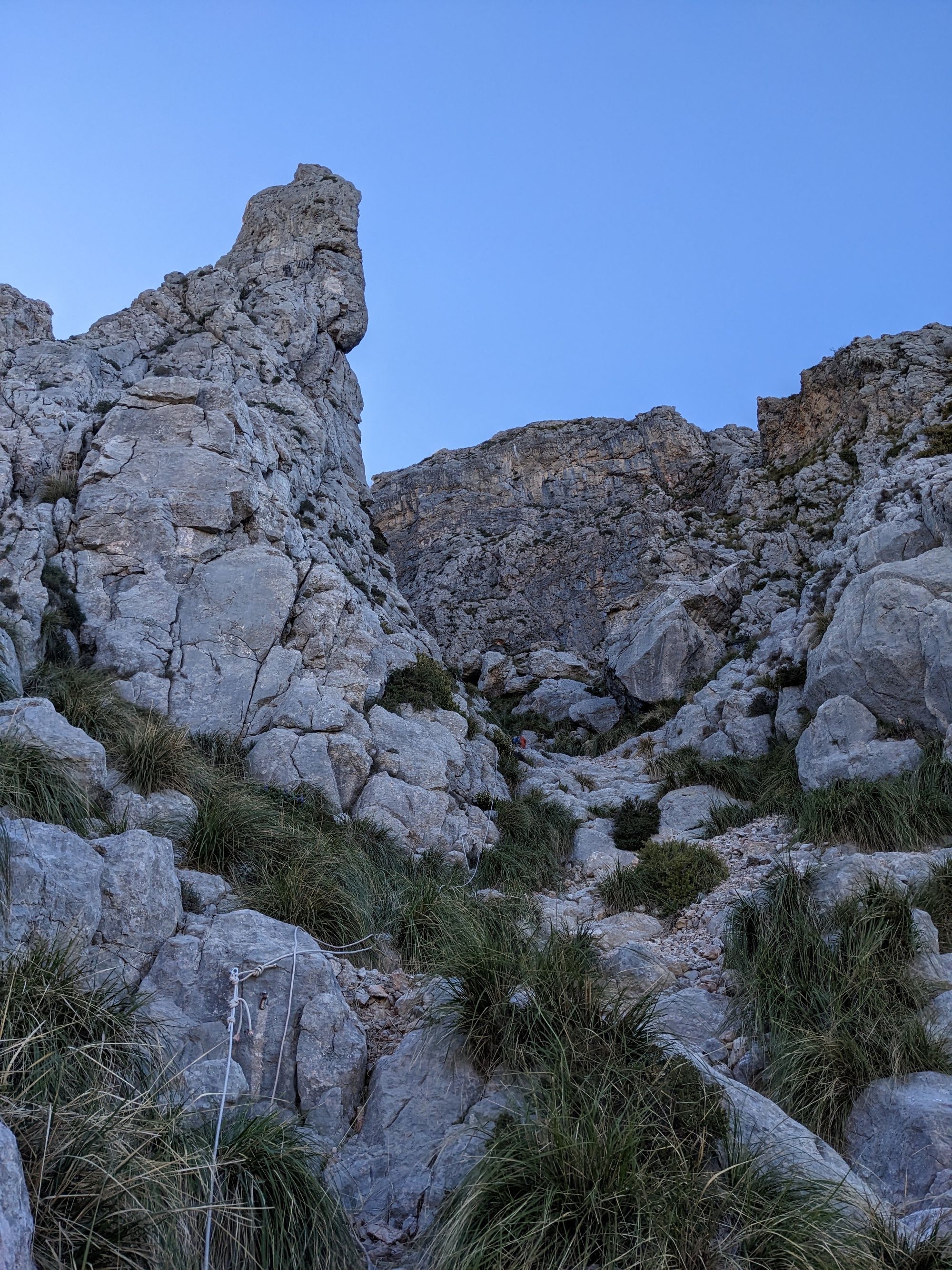
Once at bottom reverse the Agulla de Frare approach to get back to the car.
In total this way down will take about two hours (3.5 kilometers; the technical part of the descent loses 300 meters of elevation in 800 meters of distance).
Scramble descend alternative 2
This alternative is quicker but more dificult with some downclimbing required.
On the grassy col turn left and make your way down about 100 meters of elevation on scree and rocky ground. As the descent gets steeper you will see a cairn leading the way towards two canals leading down.
Follow more cairns down the left hand canal. As you enter the canal you need to down climb several sections (beware of loose rocks). This is definitly "no fall" terrain. This section covers about 120 meters of descending and brings you the the left hand base of the wall in about 30 minutes from the col.
From here retrace your approach way.
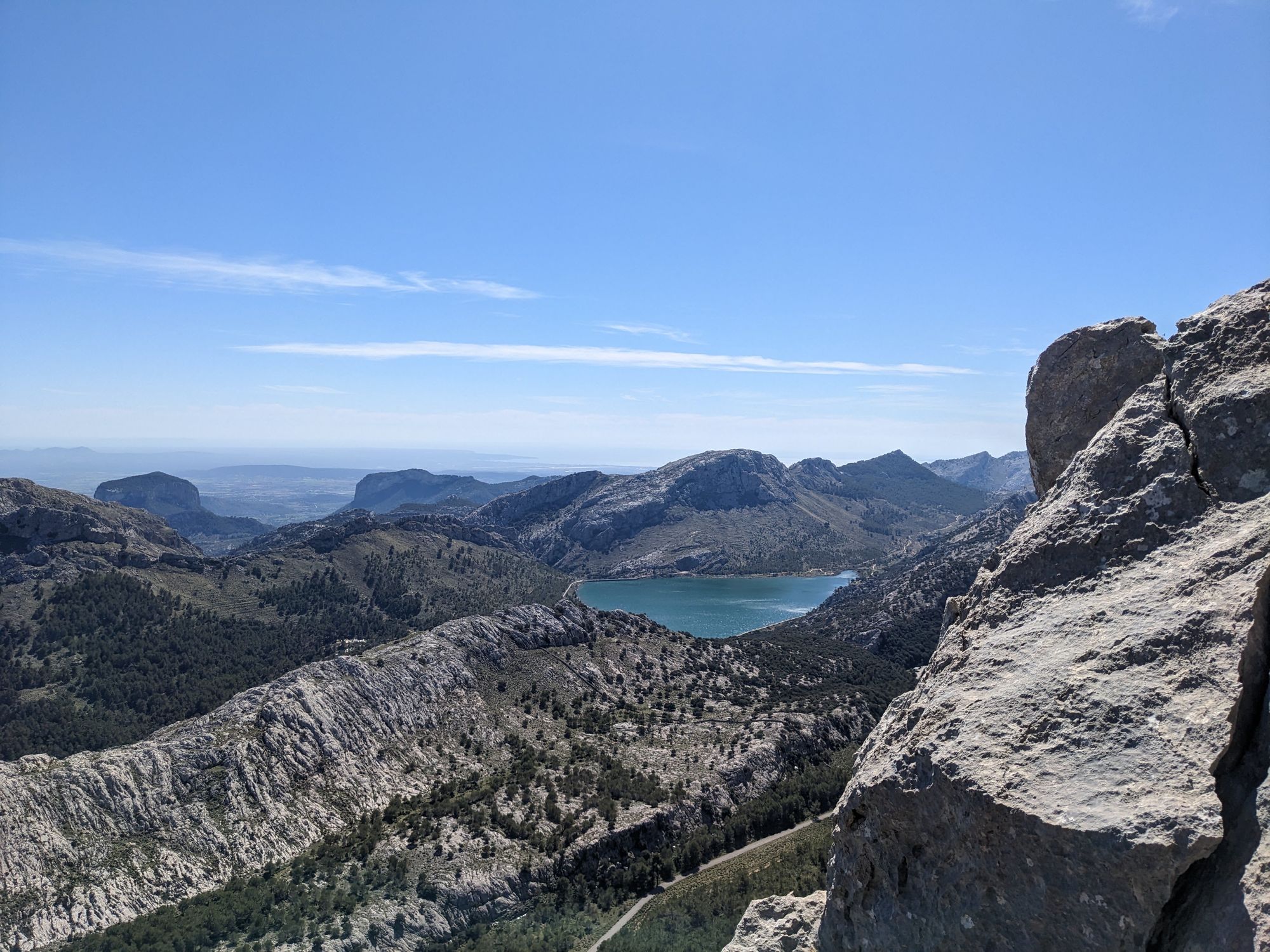
Technical information
- The climb is split up into seven long (up to 45 meter) pitches and totals 280 meters of climbing.
- All pitches and belays (including rappel rings) are bolted. However the distances between bolts are fairly wide, 8 bolts on 45 meters on pitch one for example.
- Gear: Double ropes (min 50 meters) or single rope. The double ropes allow for a rappel descent or to bail off the route. A set of small and medium cams to add to the protection is advisable (there are many cracks suitable for cams up to Camelot size 2).
- The rock quality is excellent, except on pitch six which is a mess of loose rocks and blocks.
- With a south-east aspect the ball is sunny the whole day.
Climbing and pitches
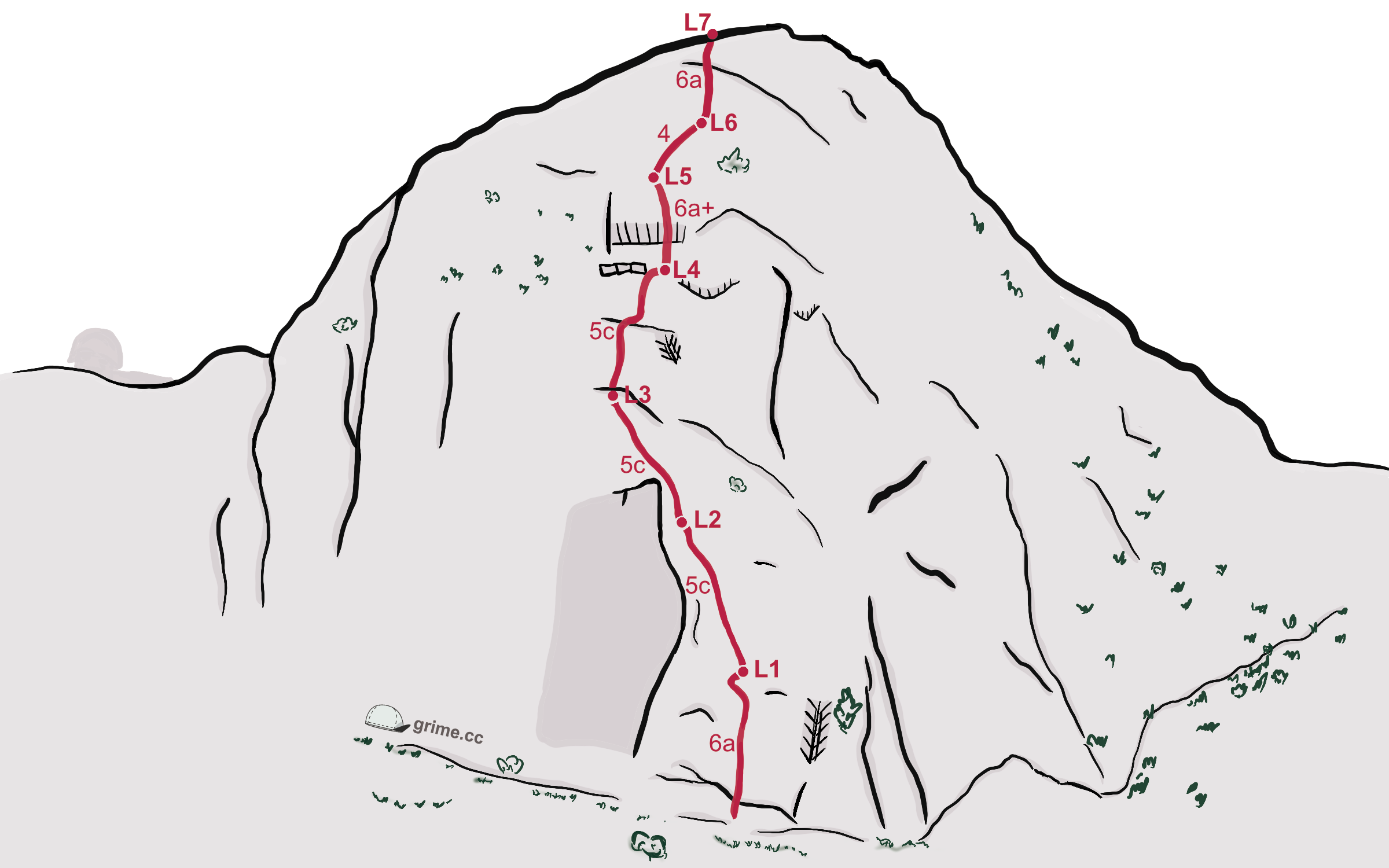
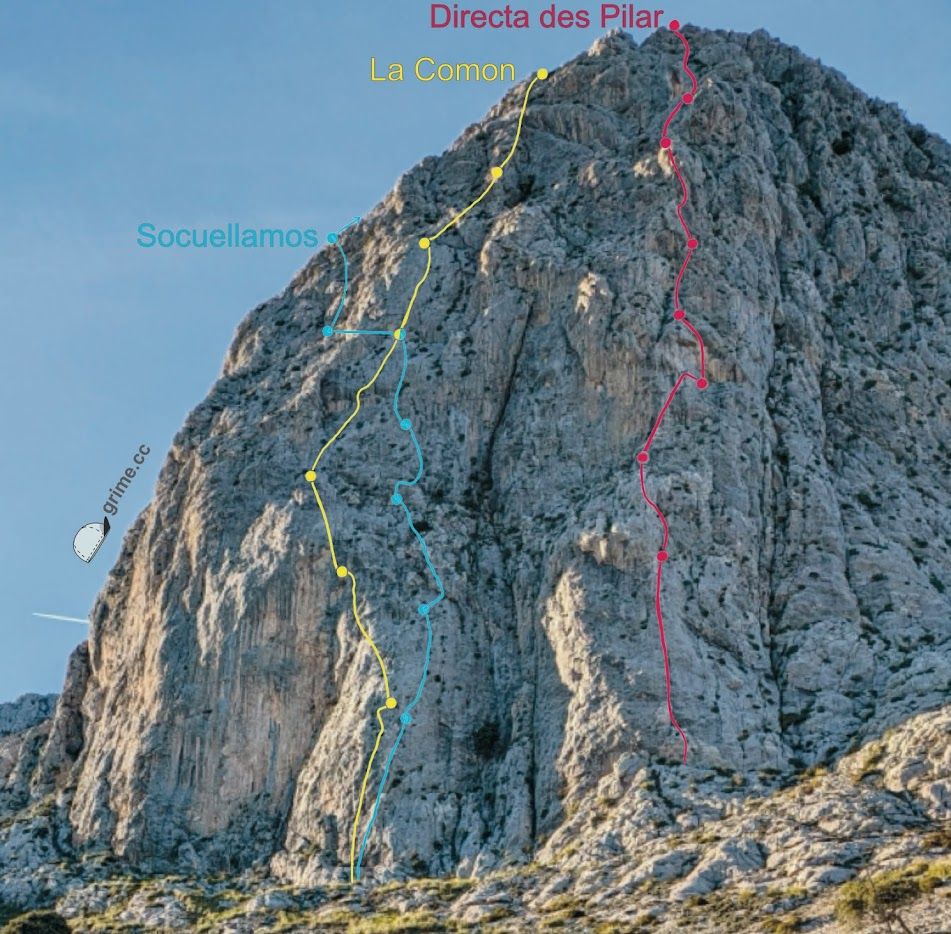
All pitches on this climb are long and sustained. The crux sections are both physical and technically challenging.
The climbing is on well featured rock similar to Agulla de Frare. However many of the crux bits feature cracks that can be hand and foot jammed.
Plan for five to seven hours on the wall (depending on the speed of your party).

